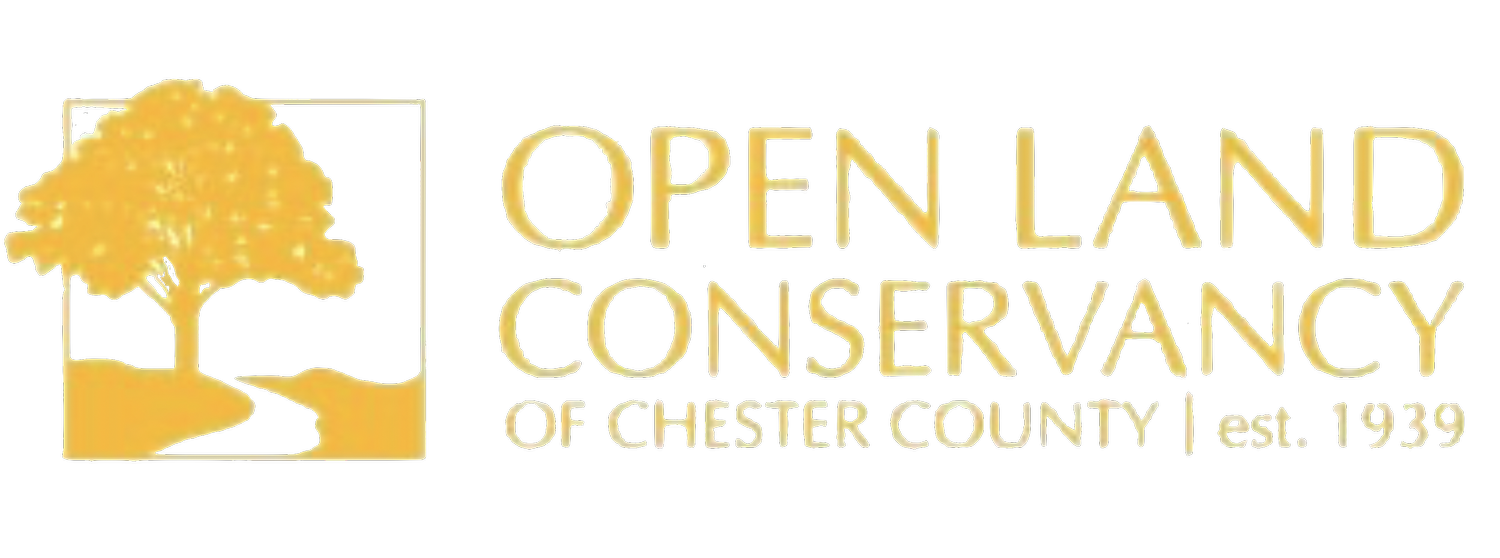Visitors to the George Lorimer Preserve will have seen the gradual greening of the graded area where the small pond used to be. Maybe, like us, they will have been amazed at the burgeoning rye grass, broadcast seeded in mid-December 2023 to help control erosion! While this has been happening and the ground is settling, the Conservancy has been working on the long term planting plan always envisioned as Phase 2 of the project. On August 1st we took the next step by installing professional fencing to protect that planting from deer browse.
The first step was to decide the overall strategy. We started from the Conservancy Mission: “to protect and enhance wildlife habitat”. Board member Margot Taylor spearheaded the process to decide the particular wildlife for which to design that habitat. We consulted with our friends in the birding community and determined that the Wood thrush would be a desirable target species that could be attracted to the restoration site and surrounding woodlands. PA Birds of Conservation and PA Action Plan both included Wood thrush, Hylocichla mustelina, as a species to protect and preserve its habitat. The species has been observed in Lorimer Preserve.
The Pennsylvania Heritage Program website’s PA Community Prediction Tool for Site Restoration was used to assist with selection of a target restoration vegetative community and plant species list based on common species found in similar natural communities. This led us to zero in on the Red maple/Blackgum Palustrine Forest community. Hopefully our blackgums will look as magnificent in future Falls as the one below:
We also decided early on, based on the successful growth in the deer exclosure at the old scout cabin site in the Airdrie Forest Preserve (take a visit to check it out!) that the best strategy for getting that community established in the face of the pressure from deer browse, was to
Enclose the planting in a sturdy, professional deer fence
Invest in larger plants, typically the #5 and #7 container sizes
We then looked for professional partners to help implement such a strategy. Thanks to advice and references from our contractor friends and from organizations like Natural Lands, we found restoration contractor Land Studies and fencing contractor ProFence willing to work with us to scope a project based on virtual assessments of the site. These estimates then formed the basis of grant applications.
The Conservancy is hugely grateful to the Marshall Reynolds Foundation, the generous funders of the transformative 2023 signage project, for continuing to support our ambitions. Together with the balance of the Valley Creek Trustee Council funding (saving largely due to Board member Scott Bush’s environmental engineering expertise), we have secured the funding to make this next phase possible.
Our first step was to engage our trail mowing stalwarts from Dave Ludwick Landscaping to mow the area. Then, two fenced deer exclosures (one of each side of the stream) were installed by an excellent ProFence team on August 1st. The fence consists of 96 inches tall High Tensile Woven Wire, with posts of 5-6 inch round, 12 feet long Southern Yellow Treated Pine, spaced every 15 feet. Each exclosure includes an 8 foot gate for planting and maintenance access. Here is a photo of the team and their tool cart finishing up the project after a ten and a half hour day in 90 degree heat, with supervisor Lester and installation experts Wendell and Travis.
Board member Margot Taylor, Preserve Manager Greg Sprissler and Conservancy Vice-President Ray Clarke met on site with Andrew Miller, Land Studies Project Manager and Arborist, seen in the photo below taken by Margot. Standing by the project sign, they discussed the excellent results of the project so far, and considered the details and refinements required to coordinate with the fencing and to establish the desired community. Planting is expected in October/November.




